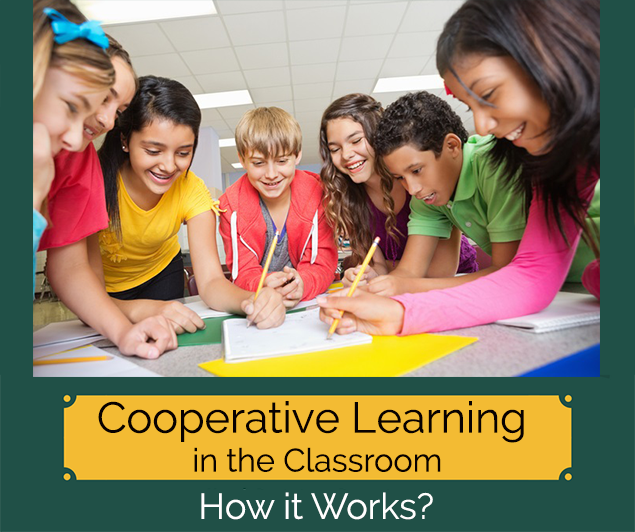Promote Cooperative Learning in the Classroom
Posted by Network Support · Leave a Comment
Help students learn from each other and gain interpersonal skills…
When students collaborate they begin to understand one another better as well as increase their subject knowledge. Although some time and planning is needed, collaborative classroom activities can make a large impact on students.
How does it work?
Students work in groups of two or more to perform a given task or to achieve a specific goal. They learn to explore and apply key ideas in their daily lives from their lessons. Working together promotes dialogue, which is the key to learning. Dialogue enhances understanding when learners interact with each other and share ideas and knowledge.
Further, collaborative learning involves positive interdependence, individual accountability and interpersonal social skills. The teacher must introduce and encourage these elements in the classroom.
Two major roles of a teacher in a collaborative classroom are:
- Supporting students in meaningful collaboration
- Enhancing student collaboration in the classroom
Let’s take a closer look at the role of the teacher:
1. Supporting Students
There are three supporting roles that every teacher should be in the classroom – Facilitator, Model and Coach.
Facilitator:Teachers can facilitate classrooms with diverse and flexible social structures by promoting the sort of classroom behavior appropriate for communication and collaboration. A classroom with appropriate structure promotes positive group interaction and good behavior.
Teachers as Facilitators set the stage for learning. They create comfortable environments for learning. They come up with activities and opportunities for collaborative work and offer students multiple ways of learning. For example, a teacher can start by arranging desks so all the students can see each other. This will enable them to have eye contact while discussing issues. Teachers can also assign roles for students in every group such as spokesperson, cheerleader, recorder, leader, etc. to set the stage for collaboration.
Model: When it comes to creating a highly collaborative classroom, teachers need to model listening, paraphrasing, artful questioning and respectful debate.
With respect to group processes, teachers can put themselves in different groups in various roles. This gives the teacher the opportunity to model how the students are expected to participate in the different roles and group dynamics.
Coach: A major principle of coaching is to provide the right amount of help when students need it – neither too much nor too little so that students retain as much responsibility as possible for their own learning. For example, a collaborative group of junior high students worked on the unemployment index in states across the country and prepared a presentation. But they were having trouble organizing the information on paper. The teacher suggested they use a graphic organizer like they learned in class. The teacher coached the group, but the students had to rely on their own learning and team coordination to complete the project.
2. Enhancing Student Collaboration
It is important that the teacher enhances collaboration in the classroom. Collaboration and group work can be harder for some students than others so it is crucial that the teacher pays attention to each student and their learning styles. The teacher can then pair students together and give them roles that will challenge them but also help them grow in positive ways.
To collaborate, students need the following:
- A task or problem that needs solving
- A group of students with different problem-solving capabilities
- Time to complete the project and work together
Incorporate collaborative learning in the classroom to enhance learning and help students grow in important life long skills.





